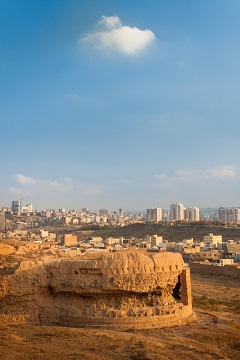About Rabʿ-e Rashidi

The Rabʿ-e Rashidi complex in Tabriz stands as one of the most prominent scientific, cultural, and educational centers of the Ilkhanid period. It was founded in the early 8th century AH (early 14th century CE) through the efforts of the distinguished scholar and vizier of the Ilkhanids, Rashid al-Din Fazlollah Hamadani. Situated in the northeastern part of Tabriz, on the slopes of Mount Surkhāb, the complex was conceived as an international hub of scholarship and a pioneering model of education and research. It can be regarded as one of the earliest examples of a “university town” in the Islamic world.
Rabʿ-e Rashidi encompassed a diverse array of educational, religious, service-oriented, and cultural facilities, including specialized schools, a congregational mosque, a vast library, a dar al-shifa (medical center and school of medicine), scriptoria and workshops of manuscript illustration, guesthouses, and residential quarters for scholars and students. The endowment deed (waqf-nāmeh) of this complex—today recognized as a valuable document registered in UNESCO’s Memory of the World—provides a detailed account of the administrative, financial, and educational organization of Rabʿ-e Rashidi. This document not only reflects the well-structured and advanced nature of the institution but also offers invaluable insights into the architecture, management, and pedagogical approaches of that era.
The significance of Rabʿ-e Rashidi extends beyond its architectural framework or educational functions; it played a pivotal role in cultural exchange among Islamic civilizations, China, India, and the Western territories. The presence of scholars and students from various parts of the Islamic world and even from more distant lands underscores the global stature of this center in the production and dissemination of knowledge. However, following the execution of Rashid al-Din in 718 AH (1318 CE), the complex fell into decline, and over time, large sections of it were destroyed.
Today, only remnants of the original grandeur of Rabʿ-e Rashidi remain, such as brick walls and towers, which in recent years have been subjected to archaeological excavations and conservation efforts. As a symbol of Tabriz’s scientific and cultural flourishing, Rabʿ-e Rashidi occupies a distinguished place not only in the history of Iranian architecture but also in the global history of science and education, and ongoing efforts are being made to have it inscribed as a unique World Heritage site.
